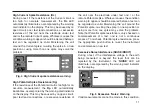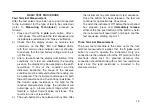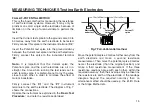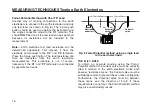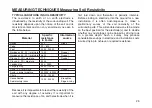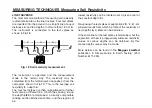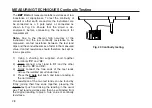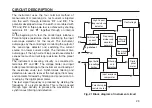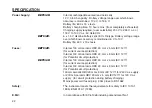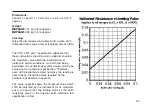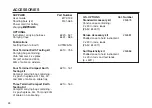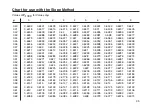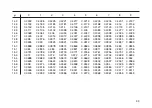
DETERMINING ‘STEP’ POTENTIAL
‘Step’ potential is the potential difference a person
would experience between his feet as he walked
across the ground in which a fault current was flowing.
Firmly connect the instrument as follows :-
1) Terminal 'C1' to the substation earth.
2) Terminal 'C2' to the Current spike inserted in the
ground some distance away.
3) Firmly connect the 'P1' and 'P2' terminals to test
spikes inserted in the ground 1 metre apart, (or the
length of a step) at positions A and B respectively.
A is nearest to the substation earth.
4) Press the 4 pole test push, and take a reading in
the normal way.
Record the resistance indicated. This is the effective
resistance across the positions A and B, as seen by
the test current.
The maximum value of the current that would flow in
the earth when a fault to earth occurred at the
substation must again be known. From Ohm's Law the
‘Step potential’ can be calculated.
Fig.17 Determining ‘Step’ potential
24
MEASURING TECHNIQUES Testing Earth Electrodes
Earth
k
C1
P2
C2
E
S
H
4 P
O
LE
3 P
O
LE
M
EA
SU
RE
R
E
P1
ES
M
E
G
G
E
R
M
E
G
G
E
R
®
D
E
T
5
/4
D
D
E
T
5
/4
D
EA
RT
H
EA
RT
H
TE
ST
ER
TE
ST
ER
R
Current
spike
Earthed Perimeter Fence
1m
A
B
SUBSTATION
Summary of Contents for DET5/4D
Page 41: ...41...


